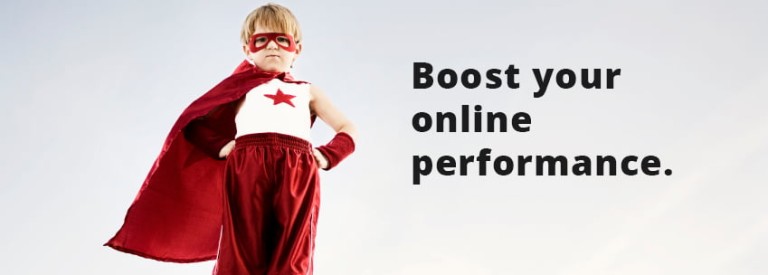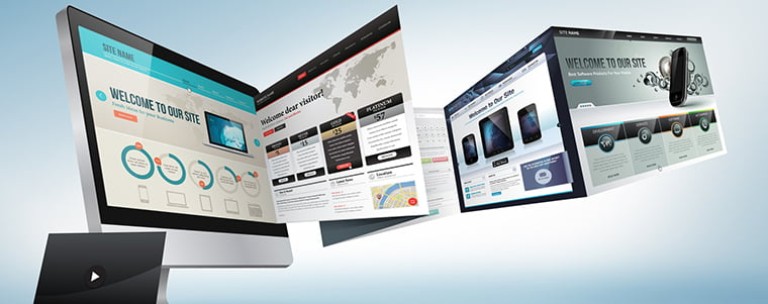Ever stumble across a website that left an big impression on you? Maybe it had advanced special effects or just looked completely different from other websites? And you thought, “Wow! Cool site!”
Chances are you didn’t actually buy what they were offering, and you just filed the website in the back of your mind as design inspiration.
Meanwhile, the websites you actually shop on or the services you actually follow up on are so “boring” that you don’t even remember what most of them look like. You never think twice about their design.
Why is that?
It’s because the average users are so focused on the product / service that they’re looking for that they never pay attention to the journey of getting there, unless the journey fits into one of two extremes: either the user experience is really amateur or really “fancy” – in other words, any design that detracts from the message.
People will undoubtedly take note of your website if it's truly subpar, or if it's excessively flamboyant. But here’s the catch – you don’t want your website, as in the 'container for your content," to be noticed at all if you want to optimize your conversions.
"Super cool” websites are the ones that are so trendy, we don’t know how to use them.
Think animations everywhere, insanely intricate slideshows, parallax on steroids, weird menu positions, funky text effects, or the worst offender: mystery meat navigation – the type of navigation where you need to hover over something to see what it is. As if trillions of hours of collective A/B testing haven’t taught us anything, yes, mystery meat navigation is back from the 90’s.
High-converting websites have to meet a minimum aesthetic threshold, but offer diminishing or even negative returns beyond a certain aesthetic threshold.
It’s not that high-converting websites are literally boring. It’s just that everything is where you expect it to be. All the elements on the website are predictable. The navigation is on the top, the contact info on the right side, the offerings are clear, the benefits are clear, and the content is organized in a logical hierarchy with appropriate images scattered throughout. Nothing is jumping out at you, nothing is moving around the screen, nothing is blowing up in your face, content isn’t hiding behind a hover effect, and you don’t have to wait for a critical piece of information to fade-in at slide #3.
Meaning - you’re not thinking twice about the website’s design, you’re just instantly finding the product or service that you’re looking for. And that’s the whole point.
In other words, high-converting websites are websites where the user is so absorbed by the content that they take the website’s interface for granted. They throw your $50,000 lunchbox to the side and they enjoy eating their lunch.
Let’s look at some examples of common mistakes. Quick disclaimer: this is not intended to criticize other websites, designs or designers. People put a ton of time, effort and sweat into their creative work and ultimately, you can and should design your website in any way that you want. Design interpretation involves a huge component of subjectivity. These are simply common issues that arise during landing page A/B testing, that when properly addressed, generally improve CRO by a meaningful number.
There are endless factors to look at when maximizing CRO, here are some of the most common issues that occur in the realm of over-doing-it:
Special Effects Overload
There is a such thing as being too unique.
We all want to stand out from the crowd, we all want to grab the visitors’ attention, and we all want to dazzle our audience with our “cool” website. Right?
So why do the fireworks blow up in our face when we check our landing page conversion rates?
Because the visitors came looking for XYZ services / products, but they were interrupted with a mating display of moving objects. Not only do we have to battle with conversion rates, but special effects are difficult to compress. Special effects will almost always slow down a website and compromise SEO.
Too Many CTAs
We're talking about multiple, excessively repeating calls-to-action (CTAs).
We all know a strong CTA is critical for conversion rates. This means more is better right? Therefore, we should have 5 CTAs and repeat them all on every page 5x, 5x5=25 CTAs meaning the website will be 25 times more powerful than the website with one CTA right? Not really. One CTA is actually better. Once we get beyond the magic number of ~3 options, users start experiencing analysis paralysis. They don’t know where to click and often they bounce away.
Slideshows
Slideshows are a bit of a hit or miss. It’s more about how and when they’re used. For instance, slideshows are best left off of landing pages and sales funnels, in the same way you should not have any 3rd party advertising on your landing pages.
Basically, most users aren’t going to sit back and watch your slideshow to discover the 3rd benefit of your product or service which is hiding on slide #3. Contrary to popular belief, this is not an improved user experience over just straight up just laying out your benefits, especially on mobile devices.
Website slideshows actually work best for promotions and events, something special but not necessarily critical for your sales. For example, someone catches a glimpse of a coupon code or new upcoming collection and clicks through, but would have been equally happy scrolling down further.
Sliders also work well when it’s just the background that’s moving while the content stays static and clearly visible, especially if it’s the value proposition in a landing page. You can also swap the slider for a silent video, at which point, you’re walking the fine line between attention-grabbing and overkill. The key is to make sure that your text is always clearly visible and easy to read through.
Pop-ups Where You Cannot Find the "X"
Whether it’s a GDPR cookies acceptance bar or an opt-in conversion pop-up, users should be able to easily exit the interruption without spending too much time on it. This is especially relevant on mobile devices. Most pop-ups should be disabled on mobile unless they’re critical, and if using, they should be optimized perfectly.
Introductions or Loaders
I’m not going to spend too much time on this one. If you’ve read this far, we will assume that you know introductions are like punching the user in the face and that loaders are like slapping them.
Mobile devices get an honorable mention.
For mobile-first websites, take all that is written above and multiply the effects by 3. Because of the limited virtual real estate on a small screen, it’s important that the website displays information with as few distractions as possible.
In Sum
Your website is just a container for your content. The container should above all, support and prop up your content, but never overpower it.
High-converting websites do not skew far from universal standards of aesthetics and UI design for the given time period.
Users will notice your website if it is ugly, or exceptionally “cool” / different. Neither are good for conversions.
Users are not supposed to notice your website at all. They’re supposed to notice your content. It’s the way the content is presented and delivered that matters the most. The best feedback a business can get is, “Looks like an awesome product / service, I’ll try it!”, not “Cool website!”
This is why "super cool” websites don’t make money.
Scratch that. They make money … the web designers and web developers all make lots and lots of money.



